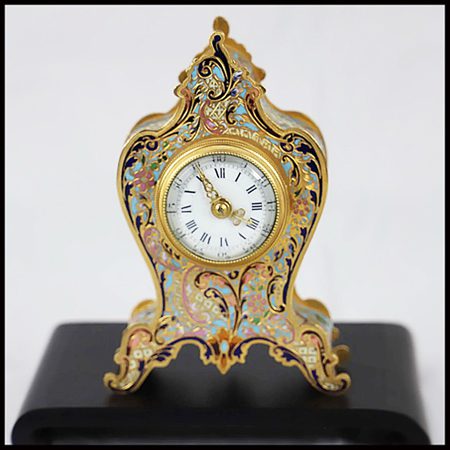WHY CONSIDER BUYING AN ANTIQUE MANTEL CLOCK FROM A LESSER MAKER?
As I have written before, from an investment standpoint, it is often preferable to purchase an antique mantel clock from a major maker rather than from a lesser known one. The reason is simple: while the cost may be more, so is the intrinsic value and your ability to sell it later. However, this does not mean that if you hunt for a bargain and settle for nothing less, you cannot find a top maker’s antique mantel clock for sale, and you should ignore this avenue.
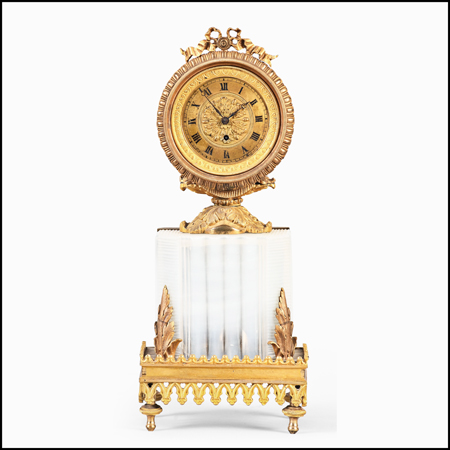
One recent case of my bargain hunting was my purchase of a small and beautiful antique mantel clock by Dubois A Paris (Dennis Frederick Dubois), who has his mantel clocks and wall clocks in famous museums, such as the Victoria and Albert Museum in London. Dubois died in approximately 1791 and came from a renowned French horological dynasty. In the case of my bargain hunting, I discovered this little gem with a Fusee (watch) movement for a price well below its value.
However, one does not regularly find bargains for antique mantel clock makers with the biggest names. Therefore, when you do not have the big bucks for a spectacular antique mantel clock by one of them, you may want to consider some of the antique mantel clock makers with lesser reputations or maybe even not known at all today.
WHO WERE THE GREAT “LESSER” ANTIQUE MANTEL CLOCK MAKERS?
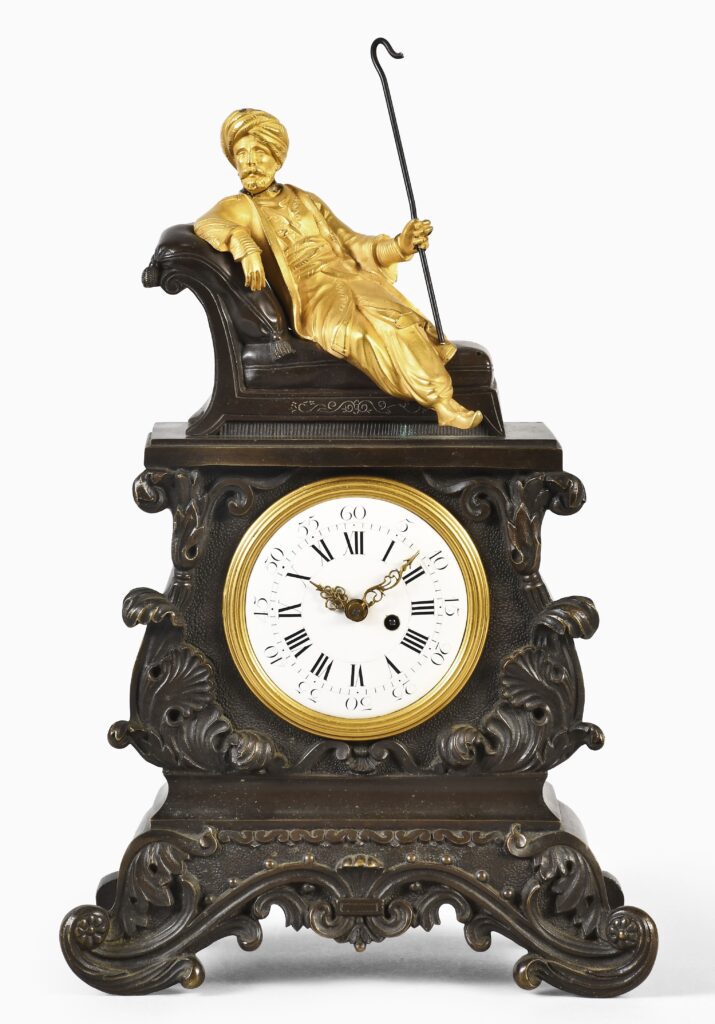
Phillip Mercier, who created his antique mantel clocks c1820, was a recent find of mine and has since been sold to a collector by me where the price of the sale was under $1,000.00 for a beautiful, running French antique mantel clock depicting a gilt figure of a Sultan holding a staff and resting atop a bronze case, Roman and Arabic numeral enamel dial with fancy pierced gilt hands, an 18th-century gilt plate verge Fusee pocket watch movement. The mechanism had a pierced and engraved balance cock, signed “P. Mercier.”
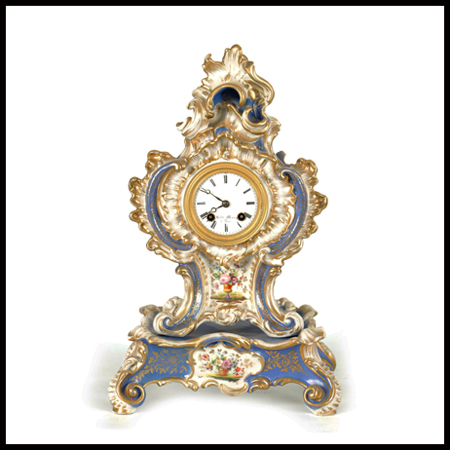
Jacob Petit was another great maker. He was mostly known for his porcelain antique mantel clocks. Interestingly enough, the same buyer of the above clock by Mercier also bought this one from me at a great price of $1,050.00. The Petit clock was an early 19th-century Rococo-style French Porcelain mantel clock. It had a beautiful, scrolled case with gilt highlights enclosing an open-faced signed white enamel dial. Roman numerals fronted a French spring-driven eight-day movement, with silk suspension and a count wheel striking the hours and half-hours on a bell.
Petit’s antique mantel clocks can be found in the Petit Palais, Paris, and the British Museum. In 2020, the famous Christies Auction House sold one for $6,250.00 before their commission.
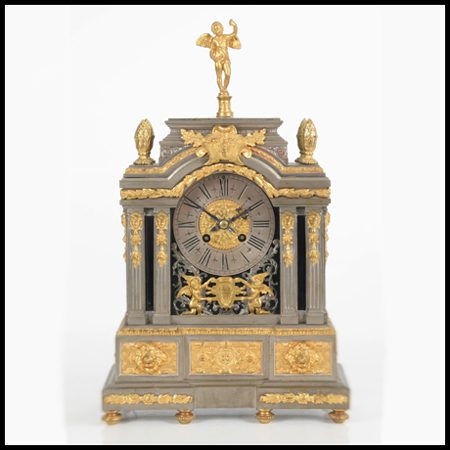
Lerolle Freres was most notable for their gilded sculptures, one of which fetched $20,000.00 pre-commission at Christie’s Auction House. As makers of antique mantel clock cases, they collaborated with many known makers of the “works,” such as Japy Freres. I have one of their magnificent clocks on my website with a unique, beautiful case. It is a French gilt and silvered bronze antique mantel clock. The arched velvet dial has a silvered chapter ring with Roman numerals, blue steel hands, and a cast filigree inscribed ‘Lerolle / FRERES / A Paris.’ This antique mantel clock dates from c1860.
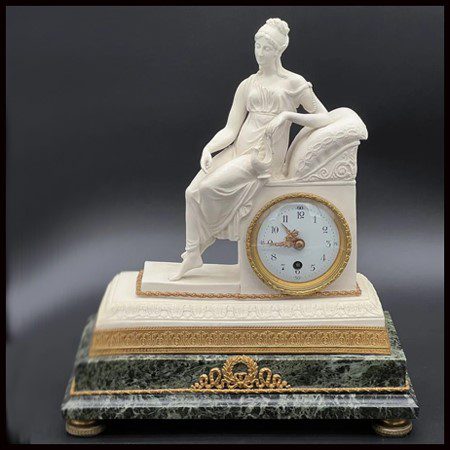
Unknown Makers. Do not be afraid to buy an vintage mantel clock that does not show the maker’s name. There are many lovely clocks for you to purchase that the maker is unknown. Sometimes, you may find a similar clock with some provenance when using the Google image search. Take an image of the antique mantel clock that interests you and drag and drop it into the image search box, and it will present you with all that look similar. For example, I have this lovely bisque, marble, and gilt bronze beauty from c1880-90 for sale on our website.
I hope the above has provided you with some additional insight into your purchase of your mantel clock and we hope to hear from you when that time occurs.


